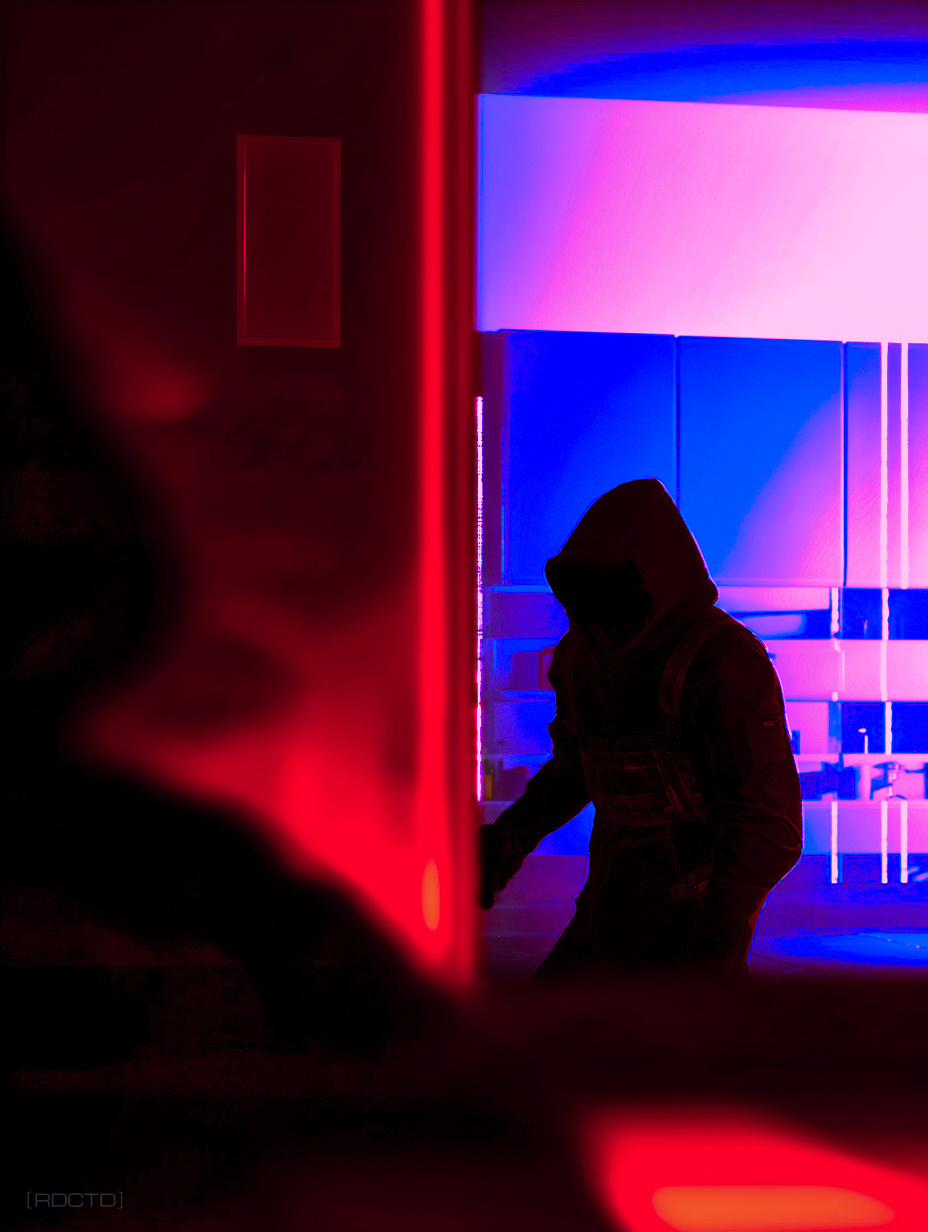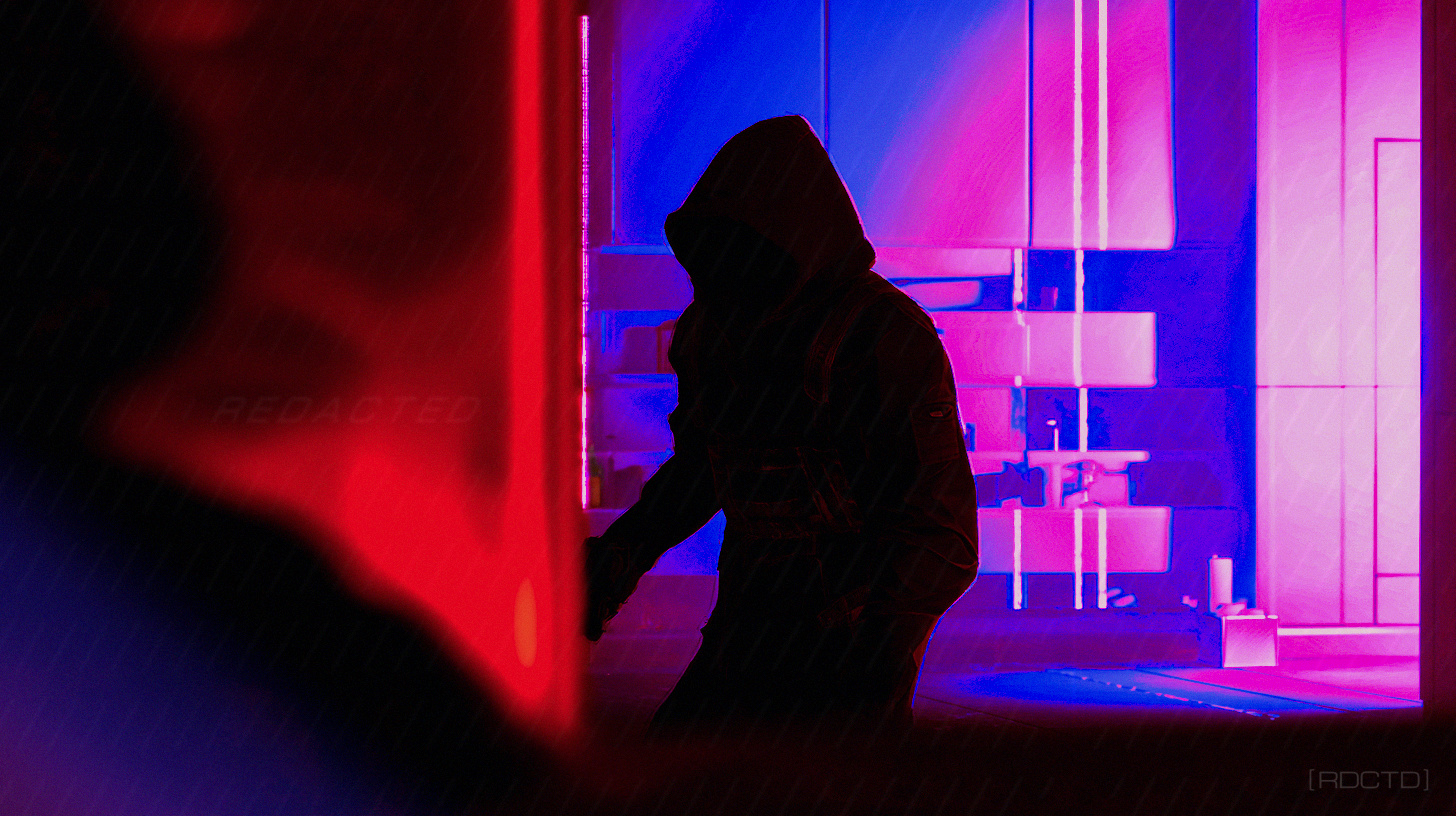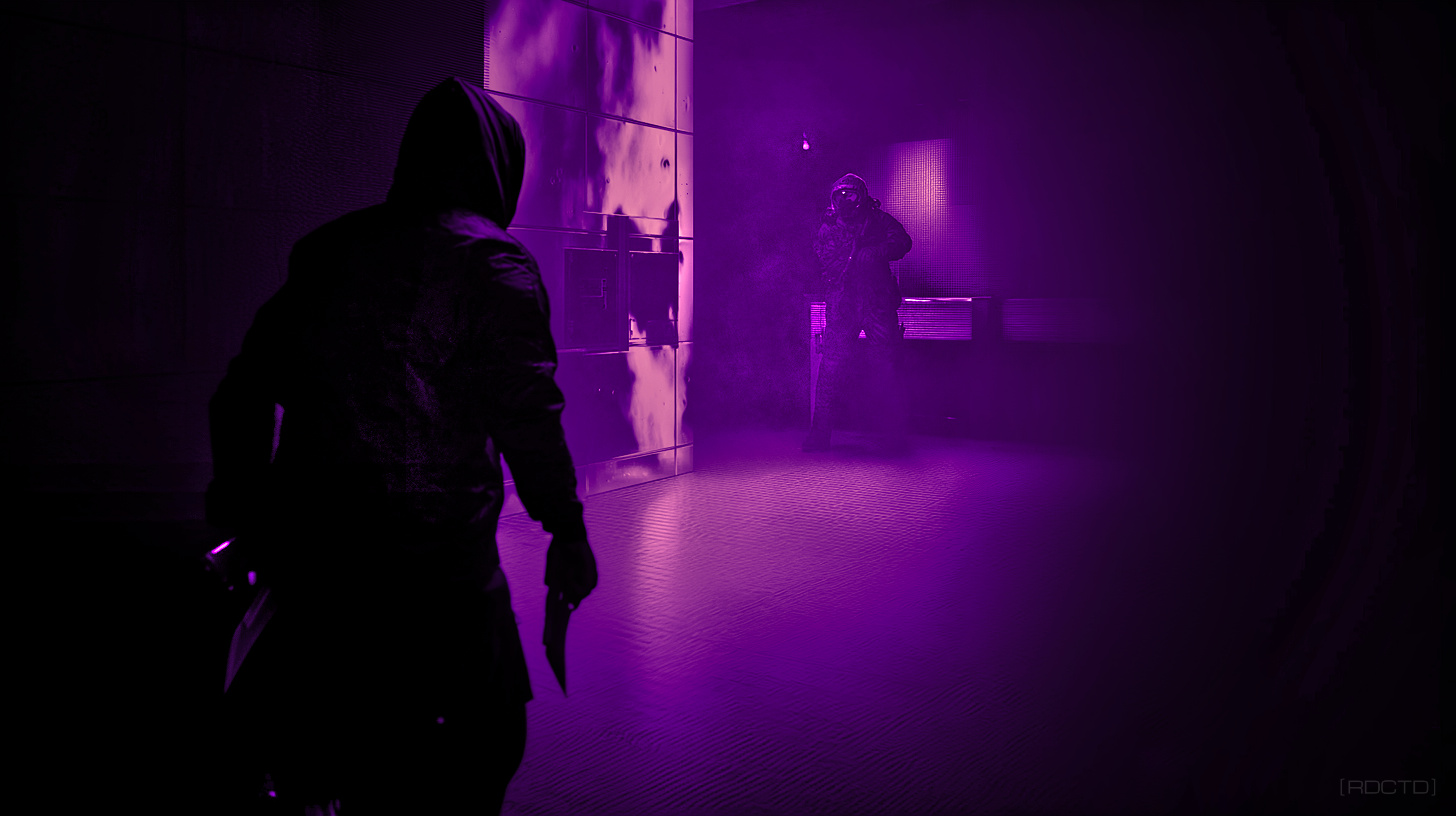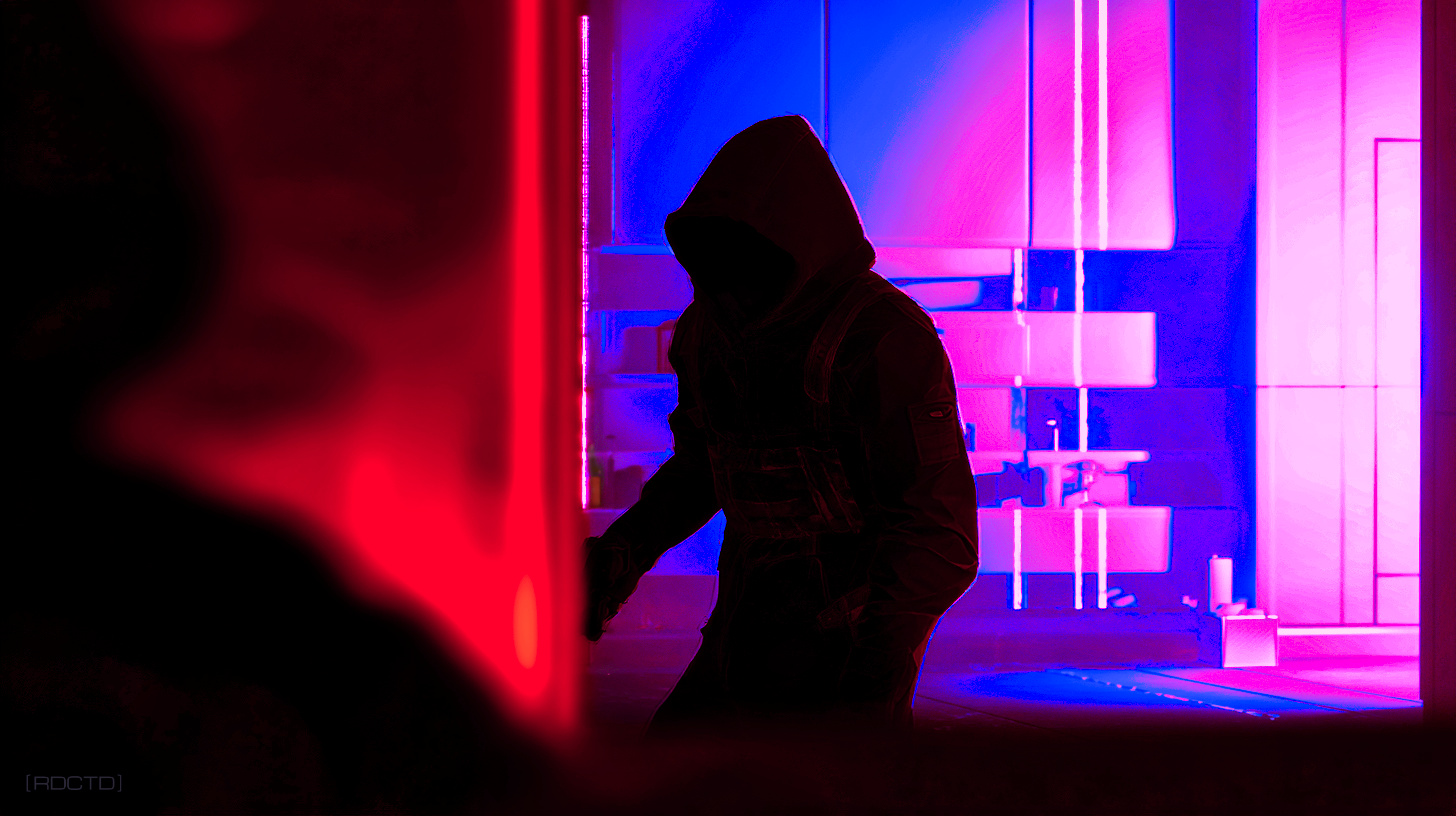 The tradecraft discipline of managing how your body and equipment appear against their surroundings to reduce an operative’s probability of detection by infrared surveillance, sensors, devices and systems.
The tradecraft discipline of managing how your body and equipment appear against their surroundings to reduce an operative’s probability of detection by infrared surveillance, sensors, devices and systems. Think in Contrasts, Not Absolutes // The system sees relative differences, not your exact temperature. Blend your profile to the visual background rather than trying to be “cold.”
Thermal signature masking is the deliberate practice of managing infrared emissions and reflections in order to minimize detectability by adversaries. Every body, object, or surface above absolute zero emits infrared radiation, and humans are especially prominent in the long-wave infrared (LWIR) spectrum due to our body temperature. Thermal imagers (modern uncooled microbolometers and cooled mid-wave (MWIR) systems), are highly effective at exploiting this radiation to detect and classify human activity.
The purpose is not total elimination, but control. Covert operatives apply masking to blend their radiance into background clutter, reduce contrast at key moments, and disrupt edges that reveal a human silhouette. The operative must treat thermal management as a continuous process, adapting to changing conditions rather than expecting a single solution.
Never Assume Uniformity // Backgrounds are patchy – rocks, soil, and foliage cool and warm at different rates. Match the patchwork, don’t stand apart.
[ FUNCTION ]
![]()
The process of thermal masking is to deny surveillance systems a distinct and recognizable target profile.
Infrared imagers detect contrast, not absolute temperature. A person becomes visible when their radiance differs significantly from the background environment, creating sharp edges and clear outlines. Even a small temperature differential – on the order of 0.1°C – can be detected by modern systems with Noise Equivalent Temperature Differences (NETD) below 50 mK.
When an operative moderates emission, diffuses hotspots, and times their exposure to match environmental conditions, the sensor has difficulty isolating the human figure. This management is technical and situational; it requires awareness of how surfaces, weather, and terrain alter background temperatures. Operatives who understand this interplay can appear indistinct, reduced to one warm patch among many rather than a clear silhouette.
The operative’s mindset must therefore shift from concealment in the visible spectrum to signature reduction in the infrared domain. Importantly, suppression is always temporary and conditional, demanding constant reevaluation of the environment and its thermal behavior.
Pressure Points Betray Faster Than Bulk // Straps, knees, and elbows will glow first – manage them like critical vulnerabilities.
[ MATERIAL ]
![]()
Clothing serves as the first and most immediate tool for regulating thermal signature. Fabrics differ in emissivity, thermal inertia, and airflow properties – all of which influence how body heat is expressed to a sensor.
Since the human body radiates strongly, clothing generally doesn’t erase the signal but instead modifies how it appears at the surface. The operative’s objective is to smooth, diffuse, and control that expression so that no hard-edged anomaly stands out.
High-emissivity textiles, such as cotton and wool, radiate strongly but present a diffuse, natural appearance that blends well with common backgrounds like soil, vegetation, and stone. In contrast, low-emissivity or reflective materials reduce emission but introduce reflection artifacts.
Layering provides buffering by delaying heat transfer to the outermost surface. An air gap between garments helps smooth the profile and distribute heat more evenly. However, pressure zones – caused by straps, packs, or kneeling – eliminate that gap, forming concentrated hotspots that are highly visible. These local anomalies can persist even after movement, creating temporary “thermal scars” on both clothing and terrain.
Skin exposure is catastrophic for thermal discipline. With an emissivity near 0.98, it’s a perfect radiator. A bare hand, face, or patch of arm appears as a glowing beacon to infrared systems. Sweat compounds the problem by saturating fabric, reducing insulation, and creating irregular heat zones.
Complete coverage and disciplined fabric management are mandatory.
Control Edges // Hard outlines reveal faster than broad surfaces – break silhouettes, diffuse transitions, and avoid skyline crossings.
[ ENVIRONMENTAL ]
![]()
Timing is critical in thermal signature management. Twice daily, at dawn and dusk, thermal crossover occurs when environmental surfaces pass through the same apparent temperature as the human body.
During these windows, detection ranges collapse because background and body signatures converge. This temporary phenomenon is one of the few naturally occurring aids to thermal suppression.
Outside of crossover, environments vary sharply. Rock, asphalt, and concrete retain heat long after sundown, creating glowing backdrops that make cooler figures conspicuous. Vegetation cools quickly and provides more uniform thermal fields, but any human interrupting those fields stands out.
Weather further modifies the thermal environment. Wind strips heat from surfaces, increasing gradients at edges such as tree lines and ridges. Humidity absorbs and scatters infrared radiation, sometimes reducing sensor range but also adding reflectivity to surfaces.
Rain or fog can obscure distant detection, but wet ground or clothing introduces unpredictable reflections. The operative must read these conditions as a dynamic system, knowing that visibility to infrared changes hour by hour.
Layer Smart, Not Heavy // Too much insulation traps heat until it bleeds out in concentrated bursts – predictable and visible.
[ SPATIAL ]
![]()
Range and geometry determine whether a thermal signature is merely detectable or positively identifiable. At long ranges, a body may occupy only part of a pixel, making contrast more important than detail.
A faint hotspot against a cold field may still trigger detection even without clear identification. At closer ranges, resolution increases, and small details like gear straps, face shape, and movement patterns become obvious.
Sensor optics and processing compound this effect. Instantaneous Field of View (IFOV) and system Modulation Transfer Function (MTF) dictate how well fine details are preserved. A blurred outline at distance can sharpen into a clear silhouette as the operative closes range.
Background transitions are equally dangerous. Crossing a skyline produces strong contrast as the warm body is projected against a cold sky. Similarly, moving against a uniform backdrop like a wall or road highlights edges.
For this reason, operatives must account not only for distance but for aspect angle, background complexity, and motion discipline.
Stay Dynamic // Conditions change hour by hour; what hides you at sunset may expose you by midnight. Treat thermal management as a moving target, not a static solution.
[ RESIDUAL ]
![]()
Thermal masking extends beyond the operative’s body to include their equipment, recent environment, and traces left behind. Batteries, optics, weapons, and vehicles all emit detectable heat after use.
A freshly fired weapon, a recently handled tool, or a vehicle hood can glow conspicuously under infrared. These emissions often last longer than expected, creating vulnerabilities even when the operator is no longer present.
Tracks and contact points form another layer of residual signature. Footprints in soil, compressed grass, or seating surfaces retain thermal differences for minutes to hours depending on the substrate. Even brief contact with a surface can leave a detectable thermal imprint.
These residual imprints often endure far longer than anticipated, lingering as detectable anomalies that greatly extend the window of exposure.
Modern and advanced sensors magnify these risks variably. Automatic gain control (AGC) amplifies even faint differences, turning subtle temperature gradients into high-contrast anomalies. Operatives must therefore approach thermal discipline as scene-wide management dynamically.
It’s not just what the body emits in the moment but also what’s left behind, what gear radiates, and how the background records presence. Suppression is always temporary, fragile, and dependent on constant awareness.
Stillness is Camouflage in Every Spectrum // If you must move, move slow, smooth, and within clutter.
[ FINAL ]
![]()
Thermal signature masking represents more than a counter-surveillance measure, it reflects an operator’s ability to think in terms spectrums of a battlespace in itself. This forces operatives to operate with a layered mindset – understanding not only how they appear to the human eye, but how they present to sensors that exploit physics beyond human perception.
This demands constant adaptation, technical awareness, and to integrate environmental science into field behavior, turning the control of heat into a deliberate, strategic act rather than a passive byproduct of movement.
![]()
// The environment is neutral, your discipline decides whether it becomes an ally or an enemy.
[INFO : Light Discipline Tradecraft]
[OPTICS : SOF x CIA Training]
![[RDCTD]](https://rdctd.pro/wp-content/uploads/RDCTD-Covert-Operative-Tradecraft-Guide-LOGO-tk.png)
![[RDCTD]](https://rdctd.pro/wp-content/uploads/RDCTD-Covert-Operative-Tradecraft-Guide-LOGO-mobile.png)






